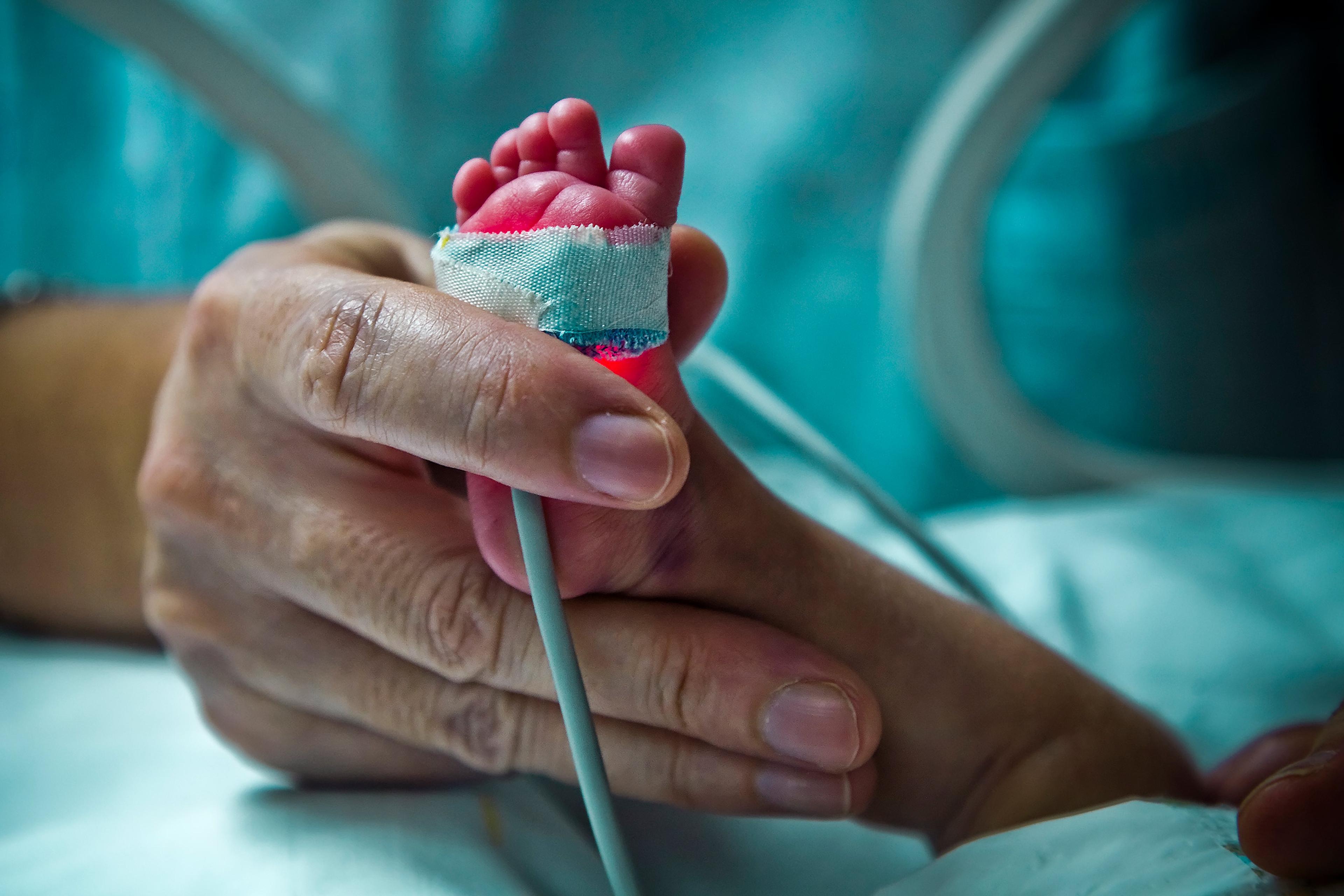On 21 March 2009, a baby named Waira was born at home near Barcelona in the charming neighbourhood of La Floresta. Unlike other births that occurred in the world that day, however, Waira’s birth was unique because millions of people in Spain and abroad would soon see the intimate details of her mother Carol’s labour on a television commercial, including Waira’s crowning and the baby’s emergence from Carol’s body.
Before the birth, Carol had welcomed members of a film crew from a Spanish advertising company into her home where they filmed the entire birth process, from Carol’s early labour through to the pushing phase, actual birth and finally breastfeeding of the newborn Waira. Several weeks later, many in Spain watched in amazement as they too witnessed the baby’s birth, captured on television in a well-crafted advertisement for Flex, a staple mattress company in Spain with wide success on the international market. Since it first aired in 2009, the commercial has been shown through channels across Spain and has received millions of views on YouTube alone.
Running its campaign slogan ‘Your bed: the most important place in the world,’ Flex’s advertisement is tasteful in its depiction of the young family welcoming its newest member into the world. With a midwife, her husband Nico and young son Cimar by her side, Carol and her family are beautiful people. They live in an attractive home found in a desirable tree-filled neighbourhood in Catalonia. In one scene of the ad, Carol makes her bed in a room that is almost entirely white, fluffing a duvet over the clean sheets, she herself dressed in a comfortable white dress, a translucent curtain allowing a faint breeze and sunlight to enter the room. In another scene, she and her husband lie in bed tenderly with their son, as they describe, in a voiceover, how their first child had also been born there. The music throughout is endearing. During the birth scene, Carol is strong, her husband holding her as their new baby arrives. Who wouldn’t want to give birth at home just like that and on such a comfortable bed?
Following its release, the evocative Flex advertisement quickly became a hot topic across blogs and websites in Spain. Flex, which had hired Sra Rushmore, a prestigious advertising company known for its socially responsible ad campaigns, had embraced birth, and in particular home birth, as part of its branding. The ad did have its detractors, some of whom claimed home birth is unsafe. In Europe, Spain has a high rate of the medicalisation of birth, and various feminist groups have, since the 1970s, alerted the public to the dangers of birth’s institutionalisation and obstetric violence in Spain, as well as to the importance of midwifery care and promotion of home-birth assistance projects.
Flex’s one-and-a-half-minute commercial on home birth brought the topic of birth care to the public’s attention more quickly and widely than had 50 years of activism in Spain. In addition to the numerous conversations taking place online and in the media about the commercial, the Spanish ministry of health released a statement only two months after the ad had aired. While not directly addressing the commercial, the governmental agency cited a largescale, respected nationwide study on home birth in the Netherlands, providing readers with statistics and declaring home birth and midwifery care safe and secure options for women and their families. The advertisement had succeeded in promoting a message that years of activism had not: home birth and midwifery care are safe.
Numerous studies have shown that, due to a myriad of cognitive biases such as belief perseverance and confirmation bias, facts unfortunately do not change people’s minds. Propaganda, on the other hand, works very well on this front, something we see clearly from how people and groups have used it over the past century. The Flex commercial, which taps into human emotion to depict birth and home birth as beautiful and desirable, is a form of positive propaganda.
The word ‘propaganda’ comes from the Latin propagare, which simply means ‘to spread’ or ‘propagate’, and finds its origins in the context of furthering Catholic missionary activity. However, its contemporary usage connotes the spreading of an idea or ideology through any means, often of a negative, manipulative nature. Some therefore view the concept of ‘positive propaganda’ as an oxymoron due to the word’s association with manipulation.
As seen in cases such as the Flex commercial, however, propaganda can also bring about a real transformation of a public mindset for the good. Martin Luther King Jr believed in the need for positive propaganda, as did W E B Du Bois, the latter of whom spoke of propaganda’s power in the arts. The intelligent use of words and images is of central importance to these undertakings.
In the United States, the key 20th-century figure who understood how to use propaganda was Edward Bernays, Sigmund Freud’s nephew and the father of the field of public relations. Born in Vienna, Austria in 1891, Bernays died in Cambridge, Massachusetts in 1995, living a long, prolific life and architecting profound changes in US society from behind the scenes.
Surprisingly, Bernays and his ideas exist beneath the radar for most contemporary scholars. I first learned about him during my graduate school years, but that knowledge came from an intellectual outside of university walls. Jason Stanley, a philosophy professor at Yale University, has examined propaganda at length and argues we must understand how it works. But Bernays is seldom of central focus to academics as they discuss such hot-button topics as war, racial equity, climate justice, etc, and many in the academic sphere have never heard of him even though his ideas on propaganda could have an impact on everything they talk and write about.
Some academics attempt to differentiate propaganda from legitimate political persuasion. But these attempts are muddled in jargon and definition. They often also undermine or ignore the importance of public relations and the history of how modern tools of propaganda developed a century ago. The great influence of Bernays and Freudian psychology on how propaganda has been used in the contemporary world is essential to an understanding of how propaganda can be used to both positive and negative ends. Stanley does a good job of providing soundbite examples of each. Propaganda, be it for good purposes or bad, is a specific form of persuasion that taps into the nonrational and emotive sides of human beings. Persuasion that functions in this way is propaganda.
Learning from Freud that people are fundamentally irrational and guided by their senses, Bernays used his uncle’s theories on the human psyche for practical purposes to develop the field of public relations. As mapped out in his slim book Propaganda (1928), which reads like an administrative or instructional guide on how to use propaganda, Bernays explains that, to sell products, companies have the capacity to tap into human desire, connecting the purchase of a product to the fulfilment of a desire. Most often, the desire has nothing at all to do with the product, but Bernays was an expert at fusing the two. A person might purchase a car, says Bernays, believing it to be a necessity in life when, in reality, the car’s true meaning for the person relates more to a desire for advanced social positioning than it does to locomotion.
During his lifetime, Bernays successfully implemented propaganda on many occasions, working with major US corporations and using media campaigns to transform the way that people bought and sold products. However, his methods also penetrated the political sphere in destructive ways, with figures such as Joseph Goebbels using Bernays’s ideas and writings as a blueprint to manipulate the masses in Germany in support of the Third Reich in the years leading up to the Second World War. Bernays himself had no clean history and was a central figure in US war propaganda during the 20th century.
As his opening paragraph in Propaganda makes clear, Bernays saw those who understand how to use propaganda as the true unseen entity governing our society:
The conscious and intelligent manipulation of the organised habits and opinions of the masses is an important element in democratic society. Those who manipulate this unseen mechanism of society constitute an invisible government which is the true ruling power of our country.
While many in academic and public spheres attempt to prove their points and change others’ perspectives through facts, analysis and argumentation, there may be other important ways of getting to the goal. A better understanding of propaganda and how to use it as a tool to change or educate people could advance the world in a positive way.
Coincidentally, the same day that Carol was giving birth to her daughter Waira in Spain, I was in labour with my first child in San Francisco, California. He was born the day after Waira on 22 March. I have written about this transformational experience in my book Imagery, Ritual, and Birth (2018) and elsewhere, including for Psyche. What I haven’t said is that in 2010, I also saw Waira’s birth in the Flex ad and wrote a short post about it on my website Visualizing Birth in December of that year. The ad was one of a few important influences impacting my own decision to give birth in May 2011 to my second child, a healthy girl, at home. As it did for others, the commercial had a positive personal impact on my life.








